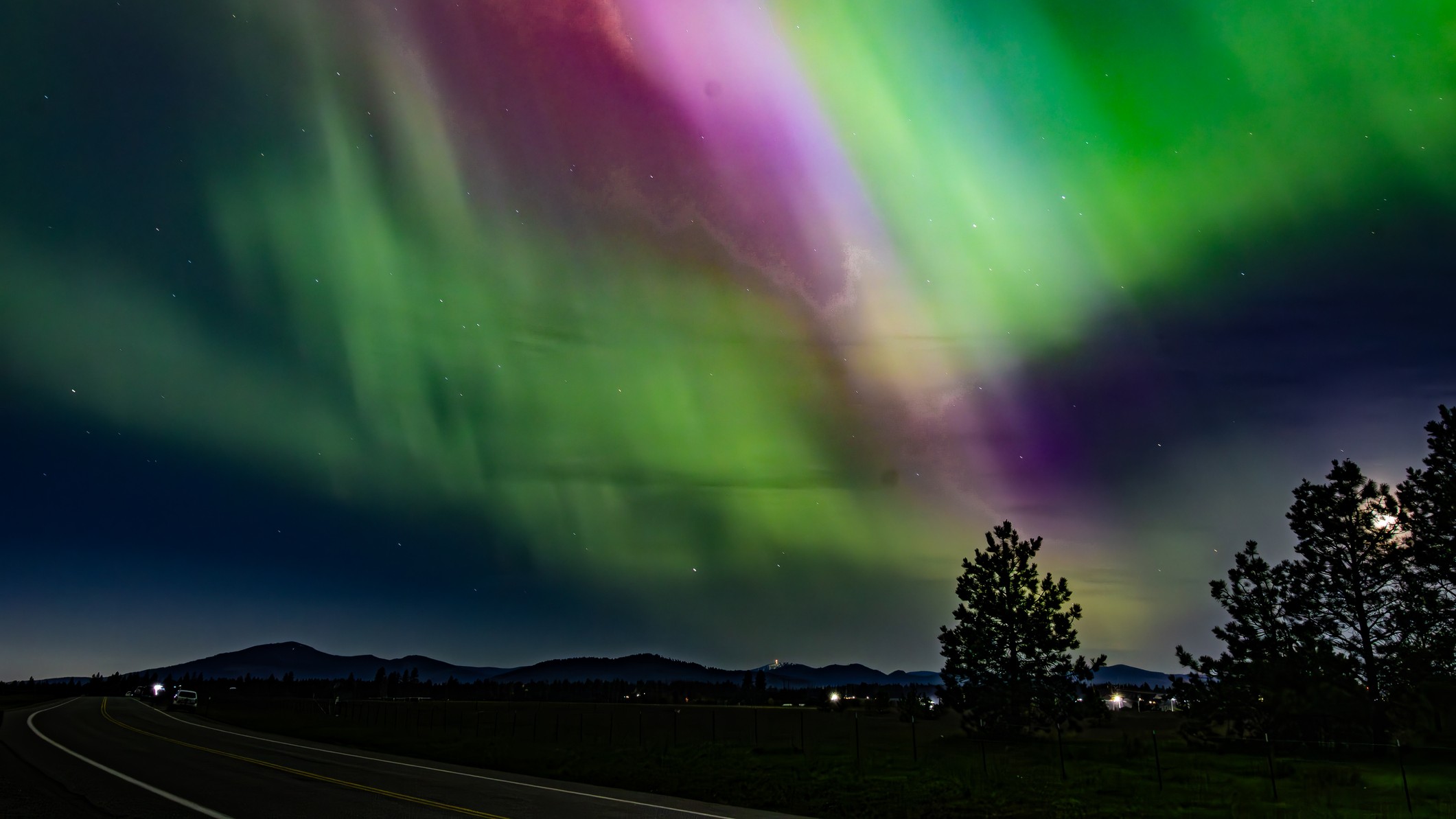The aurora borealis, commonly known as the northern lights, frequently makes an appearance in locations surrounding the Arctic Circle, illuminating the sky over places like Alaska, Canada, and Scandinavia. Nonetheless, when solar activity intensifies, these captivating spectacles may reach much farther towards the south. According to present forecasts, this particular storm might enable individuals living in sections of the central and possibly southern United States to observe the glowing green, pink, and purple lights normally associated with polar regions.
This rare visibility is associated with heightened solar activity, particularly a significant discharge of charged particles from the Sun. These particles interact with Earth’s magnetic field, producing the vibrant luminous displays we recognize as auroras. The more intense the solar storm, the closer these lights can move toward the equator. The approaching storm is rated highly on the geomagnetic scale, suggesting a potential for an extensive auroral show if conditions in the sky are clear.
The event’s cause is traced back to a coronal mass ejection (CME), which is an immense release of solar plasma and magnetic fields from the Sun’s surface. When these ejections head toward Earth, they have the potential to disturb both the atmosphere and essential technologies. Historical occurrences have demonstrated that severe geomagnetic storms can disrupt satellite communications, GPS networks, and even electrical infrastructure. Although experts do not expect this specific storm to cause disastrous harm, utility providers and satellite operators have been notified to implement preventive actions.
Experts at the National Oceanic and Atmospheric Administration (NOAA) have issued alerts to both amateur skywatchers and industry professionals. They advise that the peak time for auroral activity will likely occur within 24 to 48 hours of the CME’s arrival. Regions such as the Midwest, the Great Plains, and possibly parts of the southern states like Texas and Oklahoma could be treated to a rare celestial spectacle. For many people, this may be a once-in-a-lifetime opportunity to view the aurora without traveling thousands of miles north.
The best way to experience this phenomenon is to head to an area away from city lights. Urban light pollution significantly reduces the visibility of auroras, so rural regions will provide the clearest views. Observers are encouraged to look toward the northern horizon during nighttime hours, particularly around midnight when the geomagnetic activity tends to peak. Patience will be key, as the displays can vary in intensity and duration depending on atmospheric conditions and the solar wind’s interaction with Earth’s magnetic field.
Auroras are created when electrons and protons from the Sun collide with oxygen and nitrogen in the atmosphere’s upper layers. These interactions release energy, producing lively hues that illuminate the sky. Green is the predominant color, caused by oxygen molecules located around 60 miles above the Earth, whereas red and violet shades emerge at greater heights. This color display is not just visually stunning but also an intriguing scientific phenomenon showcasing the fragile equilibrium between solar energy and Earth’s magnetic barrier.
While this event is generating excitement among stargazers, it also underscores the importance of space weather monitoring. Scientists track solar storms because of their potential to disrupt critical infrastructure. In 1989, a major geomagnetic storm caused a nine-hour power outage in Quebec, leaving millions without electricity. Although today’s power grids and technology systems are more resilient, the growing reliance on satellites for communication and navigation makes modern society particularly vulnerable to space weather.
In addition to power outages, solar storms can endanger astronauts on the International Space Station. High-energy particles can raise radiation levels, leading NASA and other space organizations to implement safety measures during intense occurrences. Airlines operating on polar routes might modify their flight paths to reduce exposure and prevent communication disruptions. These measures demonstrate the interdependence between our technological systems and the Sun’s activity, even though it is almost 93 million miles distant.
For photographers and astronomy enthusiasts, this storm represents a golden opportunity to capture breathtaking images of the night sky. Social media is already buzzing with anticipation, as users plan trips to dark-sky locations to document the event. Experts recommend using cameras with manual settings and long exposures to photograph the aurora effectively. Tripods and wide-angle lenses can help produce sharp, dramatic shots of the glowing horizon. For those unable to travel, live streams and community-shared photos will likely circulate widely online in the aftermath of the storm.
Examining the future, researchers predict an escalation in solar activity during the coming years, as the Sun nears the climax of its current solar cycle. This suggests that comparable occurrences might happen more often, although not every solar storm will result in auroras observable at such southern latitudes. Presently, this specific geomagnetic storm is distinguished as one of the most notable in recent times, providing not only visual splendor but also a reminder of Earth’s susceptibility to solar influences.
As the storm nears, specialists advise the public to stay informed via official outlets like NOAA’s Space Weather Prediction Center. These organizations offer real-time updates on geomagnetic situations, aurora projections, and possible effects on technology. For those lucky enough to see the northern lights during this rare event, it will be a breathtaking demonstration of nature’s strength and grace—a celestial show playing out high in the sky.
From the scientific perspective, solar storms offer valuable insights into the Sun-Earth connection and help researchers refine predictive models. Understanding how these storms form and propagate is crucial for safeguarding infrastructure and planning future space missions. Each event contributes to a growing body of knowledge that ensures society can better prepare for the next major solar outburst.
If conditions align as expected, skies across large portions of the United States could glow with hues of emerald and crimson, captivating millions and reminding humanity of its place in the vast solar system. The spectacle is not merely a visual gift but a moment of unity, drawing people outdoors to share in one of nature’s most extraordinary light shows.




